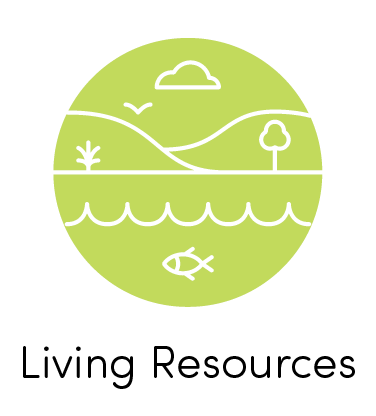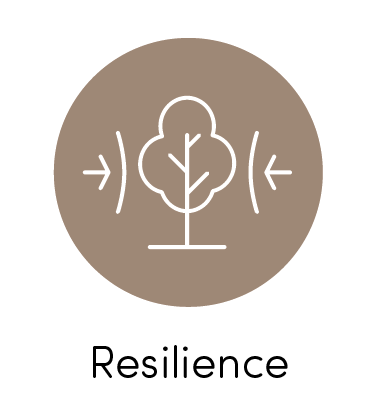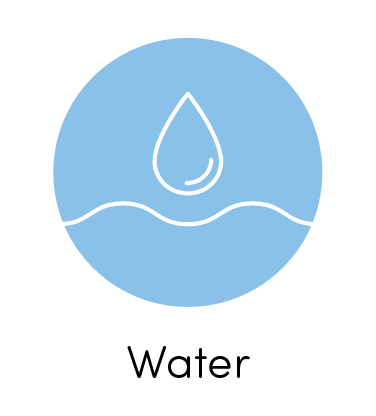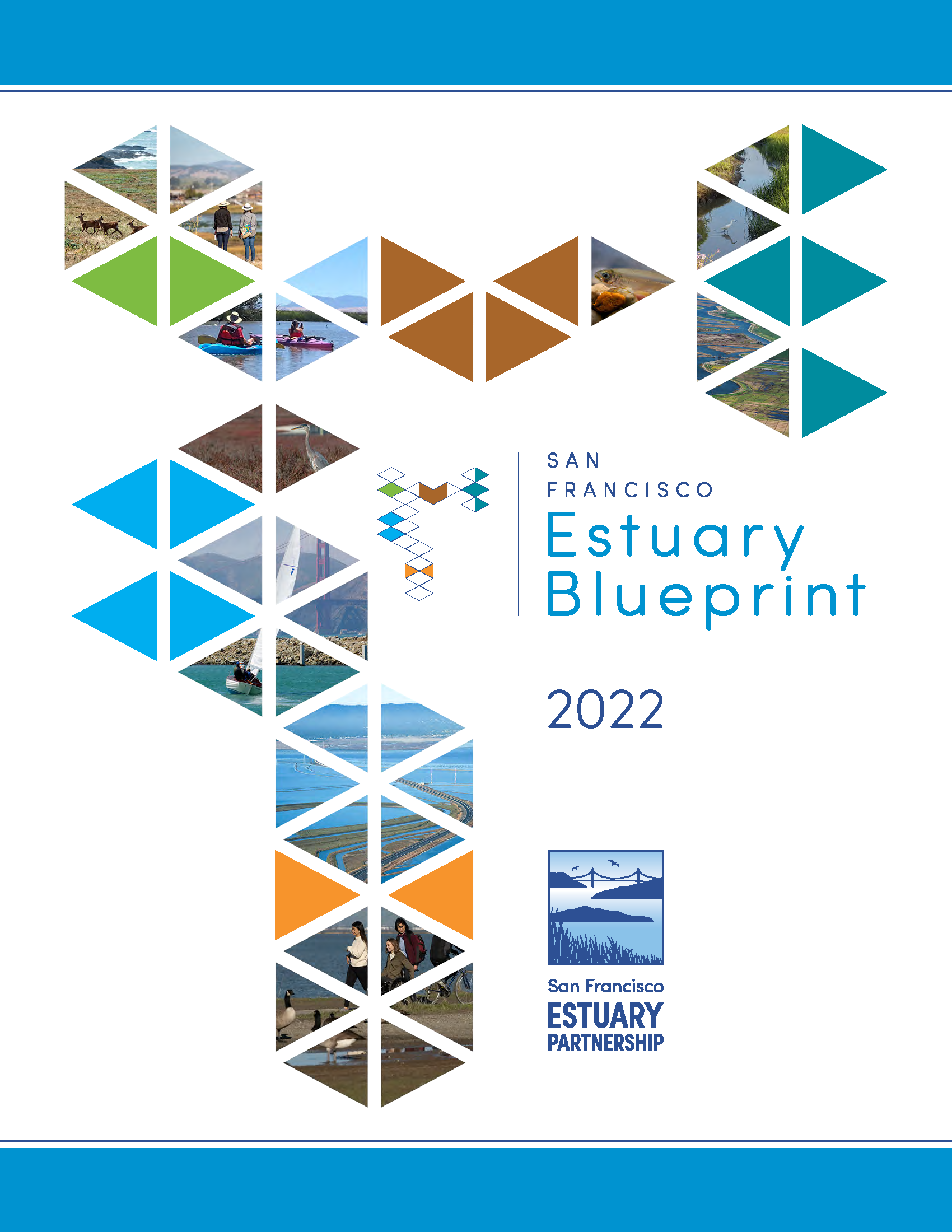Action 9: Intertidal / Subtidal Habitats
← Back to Estuary Blueprint Actions
Protect, restore, and enhance intertidal and subtidal habitats.
Protect, restore, and enhance non-wetland intertidal, unvegetated tidal flat, and subtidal habitats to improve ecological complexity and completeness, and to deliver ecosystem services and water quality benefits to the Estuary.
Overview
Non-wetland intertidal, unvegetated tidal flat, and subtidal habitats are productive, important components of the Estuary ecosystem due to their ability to shelter, support, and attract biodiversity in benthic invertebrates, small fish, crabs, and shorebirds. This Action supports the restoration goals in the 2010 San Francisco Bay Subtidal Habitat Goals Report in order to achieve improved biodiversity, resilience, and water quality. Examples of non-wetland intertidal, tidal flat, and subtidal habitats include: oyster reefs, eelgrass beds, macroalgal beds, mudflats, rocky areas, and coarse sediment beaches.
Task Description
Determine habitat suitability for native eelgrass in context with potential future climate changes in San Francisco Bay. Learn, respond, and adapt strategies to account for natural variability and climate change stressors.Task Lead(s)
Audubon California, San Francisco State University Estuary & Ocean Science CenterTask Collaborating Partner(s)
California Department of Fish & Wildlife, Merkel & Associates, National Oceanic and Atmospheric Administration, Ocean Protection Council, San Francisco Bay Joint VentureCost Estimate Key
|
Cost Estimate
$$Milestone(s)
Habitat Suitability Model for Eelgrass in San Francisco Bay.Task Description
Increase populations of Submerged Aquatic Vegetation (SAV), with a focus on native eelgrass (Zostera marina), by expanding the extent of existing beds and establishing new beds in the Bay.Task Lead(s)
California State Coastal ConservancyTask Collaborating Partner(s)
California Department of Fish & Wildlife, National Oceanic and Atmospheric Administration, San Francisco Bay Joint Venture, San Francisco State University Estuary & Ocean Science Center, Smithsonian Environmental Research Center, U.S. Army Corps of EngineersCost Estimate Key
|
Cost Estimate
$$$$Milestone(s)
Submerged Aquatic Vegetation (SAV) coverage in the Bay increased by 75 acres.Task Description
Increase populations of native oysters (Ostrea lurida) by expanding the extent of existing beds or establishing new beds.Task Lead(s)
California State Coastal ConservancyTask Collaborating Partner(s)
National Oceanic and Atmospheric Administration, San Francisco Bay Joint Venture, San Francisco Bay National Estuarine Research Reserve, San Francisco Bay Restoration Authority, San Francisco State University Estuary & Ocean Science Center, Smithsonian Environmental Research CenterCost Estimate Key
|
Cost Estimate
$$$$Milestone(s)
20 projects that increase shellfish beds.Task Description
Work with regulatory agencies, including through the San Francisco Bay Restoration Regulatory Integration Team (BRRIT), to raise awareness among regulatory agencies on the status of eelgrass, oyster, and other types of subtidal and intertidal habitat restoration and benefits documented to date; and advance discussions on a programmatic permitting framework for living shorelines projects, including native oyster reefs, eelgrass beds, coarse beaches, rocky intertidal, and other nature-based shoreline protection methods designed in a multi-objective approach.Task Lead(s)
California State Coastal ConservancyTask Collaborating Partner(s)
California Department of Fish and Wildlife, National Oceanic and Atmospheric Administration, San Francisco Bay Conservation & Development Commission, San Francisco Estuary Institute, San Francisco State University Estuary & Ocean Science Center, State Water Resources Control Board, U.S. Army Corps of Engineers, U.S. Fish & Wildlife ServiceCost Estimate Key
|
Cost Estimate
$$$Milestone(s)
Programmatic framework for permitting living shoreline projects.Task Description
Restore non-wetland intertidal and subtidal habitats other than eelgrass and oyster beds, such as rocky intertidal areas, coarse sediment beaches, macroalgal beds, and living shorelines. Identify appropriate and feasible sites, secure funds, and implement projects to create or improve these types of habitats as well as other projects that integrate multiple habitats.Task Lead(s)
California State Coastal ConservancyTask Collaborating Partner(s)
California Department of Fish & Wildlife, National Oceanic and Atmospheric Administration, San Francisco Bay Joint Venture, San Francisco Bay National Estuarine Research Reserve, San Francisco State University Estuary & Ocean Science Center, Smithsonian Environmental Research Center, U.S. Fish & Wildlife ServiceCost Estimate Key
|
Cost Estimate
$$$$Milestone(s)
20 projects that focus on rocky intertidal, coarse sediment beach, macroalgal bed, living shorelines, and other integrated habitats.Task Description
Remove artificial structures that are known to contribute to shoreline debris and water quality degradation and that provide minimal habitat benefit (i.e., derelict creosote pilings, failing seawalls, failing riprap).Task Lead(s)
California State Coastal ConservancyTask Collaborating Partner(s)
California Department of Fish & Wildlife, National Oceanic and Atmospheric Administration, San Francisco Bay Conservation & Development Commission, San Francisco Bay Joint Venture, San Francisco Bay National Estuarine Research Reserve, San Francisco State University Estuary & Ocean Science Center, Smithsonian Environmental Research Center, U.S. Fish & Wildlife ServiceCost Estimate Key
|
Cost Estimate
$$$$Milestone(s)
10 projects that include the removal of artificial structures.Task Description
Protect and enhance unvegetated tidal flat habitats to be healthy and free of debris; functionally and physically linked to tidal wetland and/or open Estuary sites; and able to sustain diverse species of Bay invertebrates and local and migratory shorebirds.Task Lead(s)
California Department of Fish & Wildlife, San Francisco Bay Joint VentureTask Collaborating Partner(s)
California State Coastal Conservancy, San Francisco Estuary Institute, San Francisco State University Estuary & Ocean Science CenterCost Estimate Key
|
Cost Estimate
$$$Milestone(s)
10 restoration site designs that include tidal flat enhancement and protection.Task Description
Task Lead(s)
Task Collaborating Partner(s)
Cost Estimate Key
|
Cost Estimate
Milestone(s)
Updates and Emerging Issues
Since 2016, this Action has expanded to include the removal or enhancement of artificial structures to explore their potential for increasing habitability for wildlife. Additionally, this Action now acknowledges the importance of both integrated and isolated species restoration approaches — eelgrass beds and oyster reefs are of particular interest since they can be considered ecosystem “engineers.” Looking forward to 2027, this Action may contain new Tasks that address erosion from expanded Bay ferry routes.
Climate Change Considerations
Because of their physical location, intertidal and subtidal habitats will be affected by sea level rise. Especially when located in areas with little room for landward migration, such as in the Central Bay, these habitats will be at higher risk of drowning from sea level rise when compared to their counterparts in the North and South Bays where there is more room for movement. Additionally, intertidal and subtidal habitats are particularly vulnerable to other aspects of climate change, such as ocean acidification and temperature increases, which impact ecosystem engineers such as oysters and eelgrass.
Equity Considerations
As with other habitat types, projects to restore tidal flat and subtidal habitats should engage Tribes and frontline communities in planning and implementation; tasks under the Climate Resilience and Equity Actions address this need.
Blueprint Goals



Connections to Other Actions
Watershed connections provide unique habitat and ecosystem services closely related to or dependent upon:
Action 1: Climate Resilience
Action 3: Adaptation Planning
Action 4: Adaptation Implementation
Action 6: Sediment
Action 11: Transition Zones
Action 12: Managed Wetlands
Action 15: Invasive Species
Action 16: Freshwater Flows
